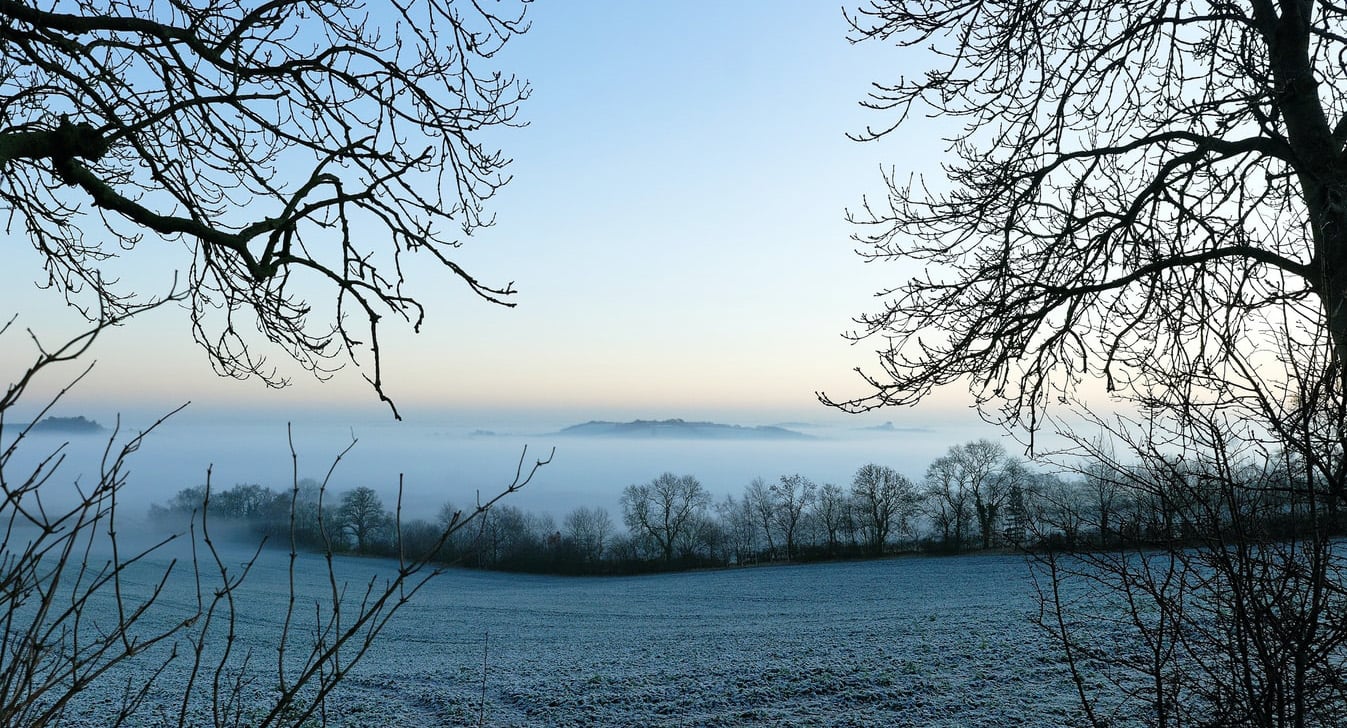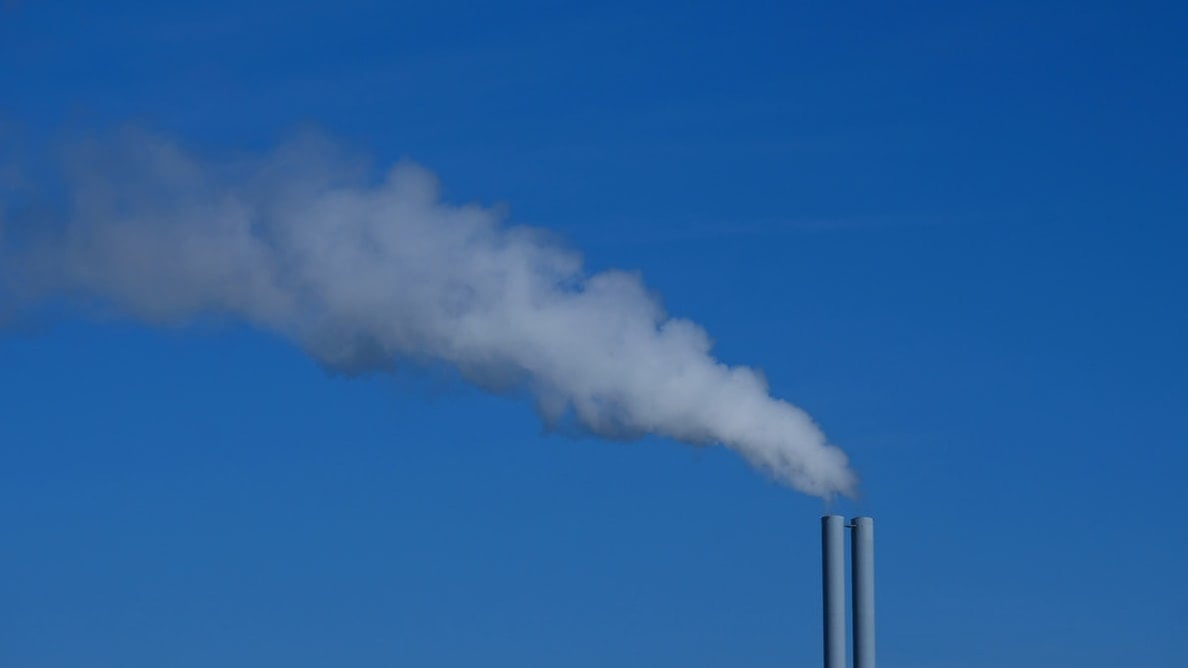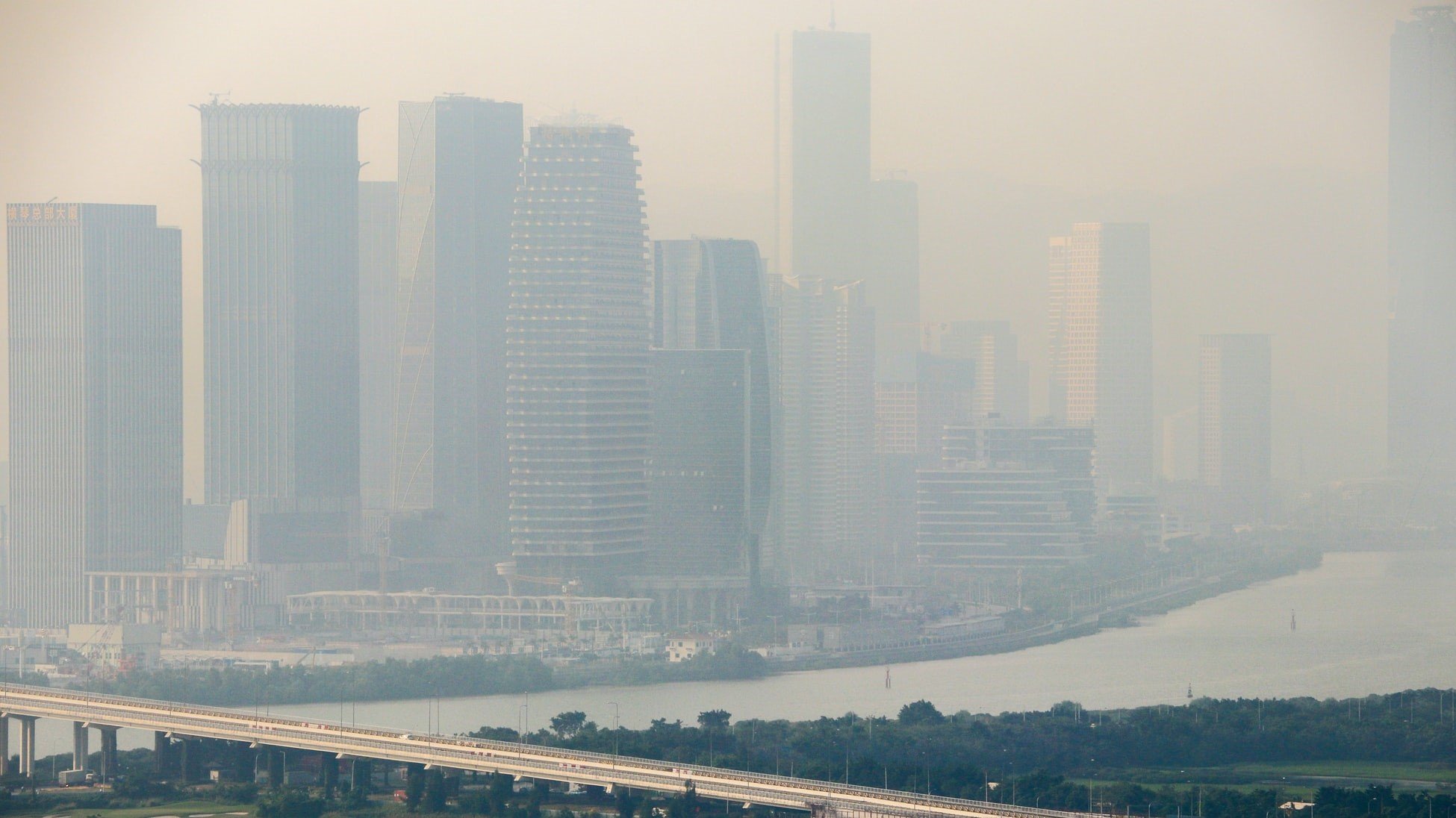Newsletter
Weather and air quality are fundamentally linked. Sunshine, rain, air currents, and temperature all have direct influences on air pollution. Long days of sunshine during the summer catalyzes chemical reactions between pollutants, and higher wind speeds can disperse areas of concentrated pollution.
Whether harmful or helpful, the weather's impact on air pollution is undeniable. Nowhere is this more evident than the event of a temperature inversion.
What Is a Temperature Inversion?
Also called weather inversions or thermal inversions, temperature inversions occur when the normal heat gradient of the atmosphere is reversed. Typically, air near the ground is relatively warm, and the atmosphere grows colder with elevation. During a temperature inversion, cold air is trapped beneath warm air, creating a pocket of stagnated air close to the Earth’s surface.
Thermal inversions are more common than you may think. Ever wake up to see a blanket of fog in low-lying areas and dew on your grass? This is a sign of a temperature inversion.
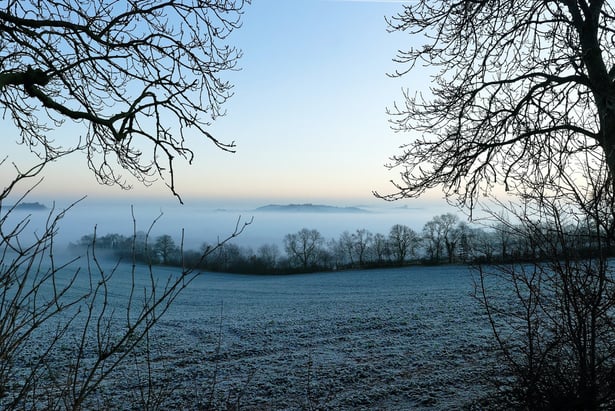
Temperature inversions usually disperse with wind, or when the surface begins warming again during the following day, but when temperature inversions stick around for a while, pollutants trapped beneath the lid of warm air can create hazardous air quality conditions.
There are several kinds of temperature inversion, including advection and subsidence inversion, but the most common type is a radiation inversion. We will talk about what causes this type of thermal inversion below.
What Causes a Temperature Inversion?
Temperature inversions don’t have a specific cause; rather, a range of factors contribute to the development of a thermal inversion. These factors include:
- Topography - Cold air can sink into low areas, like valleys, settling below layers of warm air and intensifying the inversion.
- Time - Thermal inversions occur during the evening, when the land begins to cool. The earth’s surface no longer radiates as much heat, enabling air near the surface to cool faster than the air above, forming an inversion.
- Season - Inversion events have the time necessary to develop during the winter months, when nights are at their longest. Likewise, the land does not absorb as much heat from winter’s weak sunlight, making air near the surface relatively cooler.
- Wind - Moderate to strong winds help mix layers of cold and warm air, preventing the segmentation of a temperature inversion. With weak winds, thermal inversions are much more likely to occur.
- Precipitation - Rainfall, like winds, help mix layers of air, discouraging the development of a temperature inversion. Snow will block sunlight from warming the land, making the layer of air nearest Earth’s surface cooler than normal.
The picturesque view of a clear winter sky over a snowed-in valley presents the ideal conditions for the formation of a thermal inversion. How does this meteorological “perfect storm” affect air quality? Let’s find out.
How Temperature Inversions Trap Air Pollution
Temperature inversions effectively put a lid on air pollution in an area. Usually, winds and rainfall carry away pollutants, and many pollutants naturally mix higher into the air column and disperse. These ameliorative processes don’t occur during an inversion, and pollutants build up in the mixing depth below the inversion level.
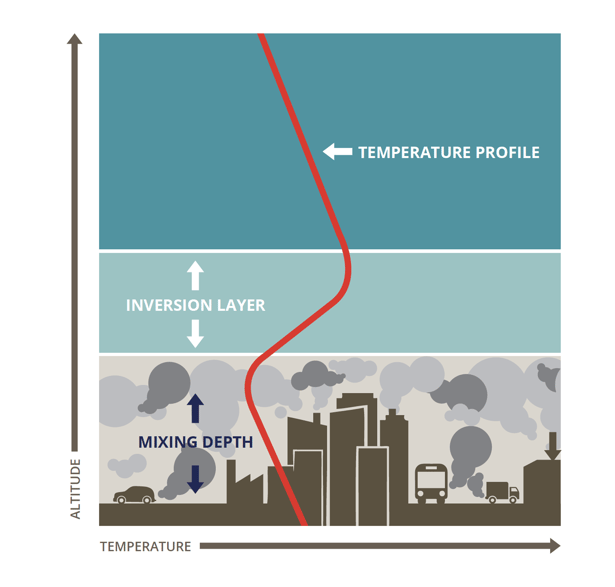
The warm inversion layer blocks air pollutants from mixing into the rest of the atmosphere. Image via the European Environment Agency.
The strength, duration, and height of the inversion will determine the severity of the pollution event, independent of pollution production. With a stronger inversion (greater thermal difference between inversion and mixing layers), less pollution can disperse into higher atmospheric levels. Likewise, the longer an inversion lasts, the more pollution will build up, and the worse the air quality in the mixing layer will be.
As we see from the diagram above, pollution remains stuck in the mixing layer, but the mixing layer can be larger or smaller depending on the height of the inversion layer. With a low inversion layer, the mixing layer is much smaller, and the pollution concentrations will skyrocket.
Another factor that influences the outcome of a thermal inversion is the levels of pollution in the area. In areas with little pollution, temperature inversions don’t have the opportunity to create pollution episodes, as there isn’t enough pollution to build up in the mixing layer. Unfortunately, temperature inversions occur in many locations, including highly-polluted ones.
Examples of Temperature Inversion Events
Some of the world’s most notable pollution episodes have happened because of thermal inversions.
1952 London “Great Smog”
The United Kingdom has long been plagued by air quality issues, beginning in the 13th century. During the post-war industrial period, air pollution became a concern of increasing magnitude.
Air quality conditions reached a low point in December 1952, when an anticyclone and windless conditions created a thermal inversion over London (see real-time air quality in London). Because of the unusually cold weather, people were burning massive quantities of cheap, sulfurous coal to stay warm. The particulates, sulfur oxides, and hydrochloric acid in the air became trapped by the inversion layer, coating the city in a thick layer of deadly smog for days.
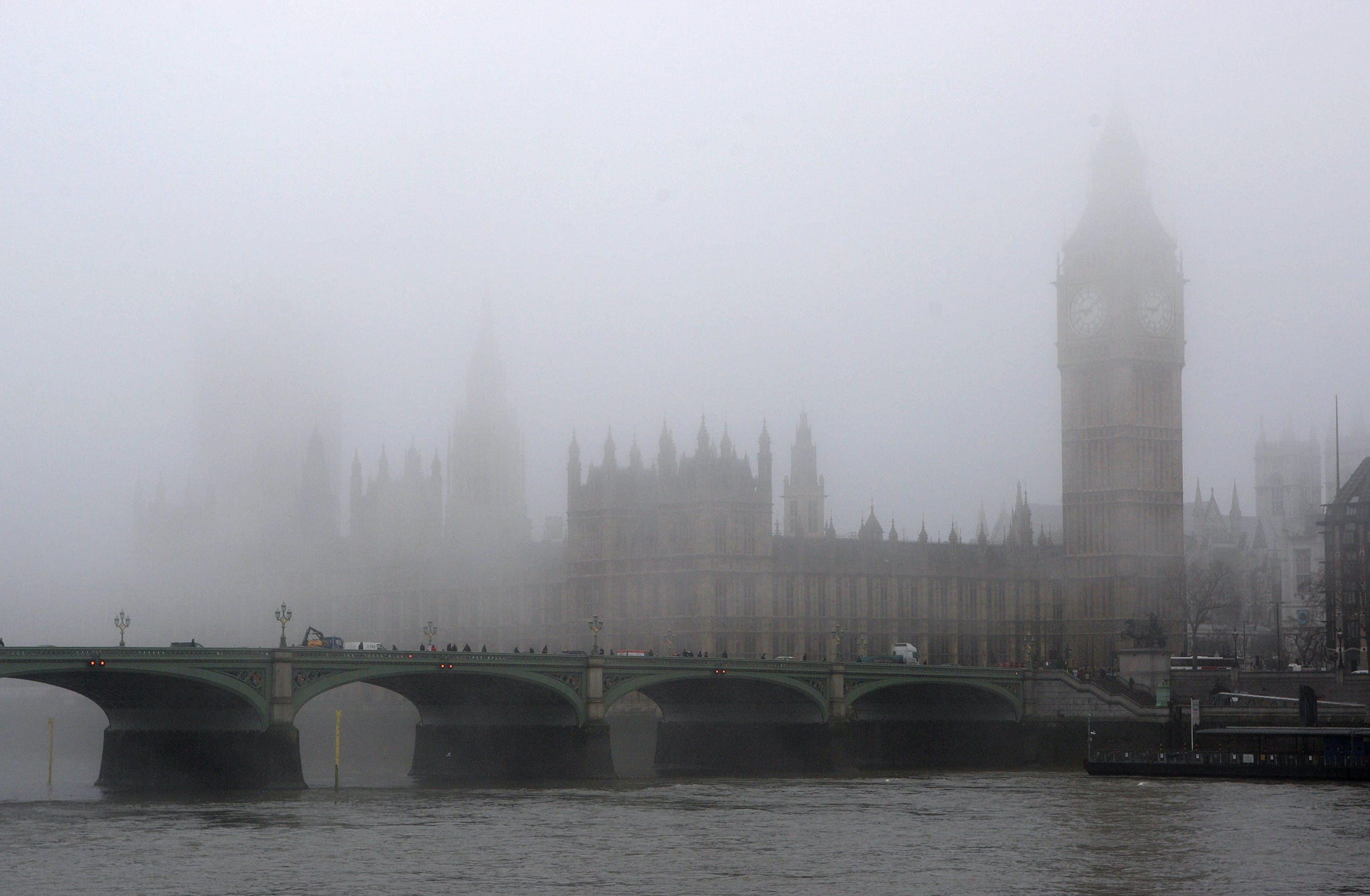
Image via history.com.
The pollution event, dubbed the Great Smog of 1952, is estimated to have killed up to 12,000 people. The Great Smog was even featured in episode four of The Crown, and it led to significant policy changes in the United Kingdom, such as the Clean Air Act of 1956.
1966 New York City Smog
Over a decade after London’s Great Smog and following its own pollution episodes in 1953 and 1963, New York City had a third major pollution episode in 1966. Due to an anticyclone and inversion, the Big Apple’s air quality nosedived over Thanksgiving weekend and resulted in approximately 168 deaths.
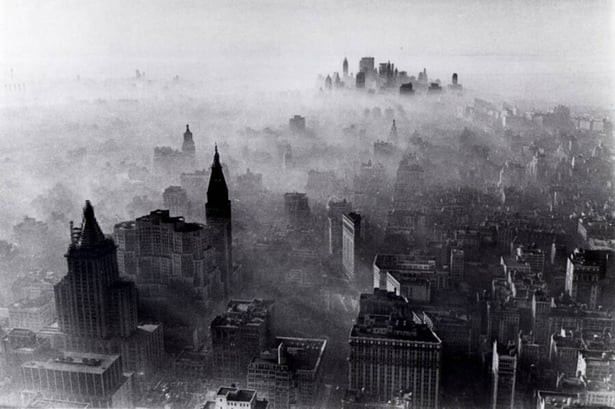
The 1966 air pollution episode quickly drew national attention and helped kick start environmental and air quality awareness across the country.
2013 Beijing Smog
A much more recent example of an inversion-induced pollution episode is the smog over Northeastern China in 2013.
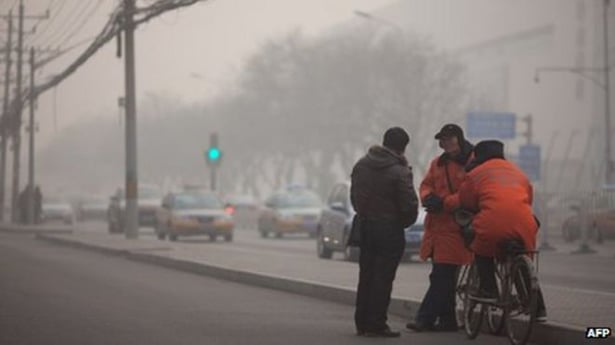
Image via bbc.com.
Beijing, China is located at the tip of the North China Plain, and mountains ring the city's north, northwest, and west sides. The landscape of Beijing makes it prone to inversions, and the air pollution in the city quickly builds up when temperature inversions do occur.
Pollution levels in north China in 2013 broke records, gaining attention from the international community and prompting pollution mitigation efforts around Beijing.
Temperature inversions have a profound effect on our air quality, especially in today's urban environment. While these weather phenomena are natural, unavoidable occurrences, understanding temperature inversions helps clarify the cause of air pollution episodes and reveals just how closely air quality and weather are linked.
To learn more about air pollution, be sure to check out our air pollution discussion below!
Kaiterra provides air quality monitors and an IAQ analytics dashboard for healthy buildings and offices, helping workplace leaders and healthy building pioneers assess and improve their indoor air quality. Our indoor air quality monitors like the Sensedge and the Sensedge Mini can be found in many of the world’s most iconic buildings and workplaces, such as the Empire State Building and the Burj Khalifa.






.png?width=200&height=148&name=Menu%20C%20(2).png)

.png?width=307&height=228&name=Menu%20-%20D%20(1).png)
.png)

